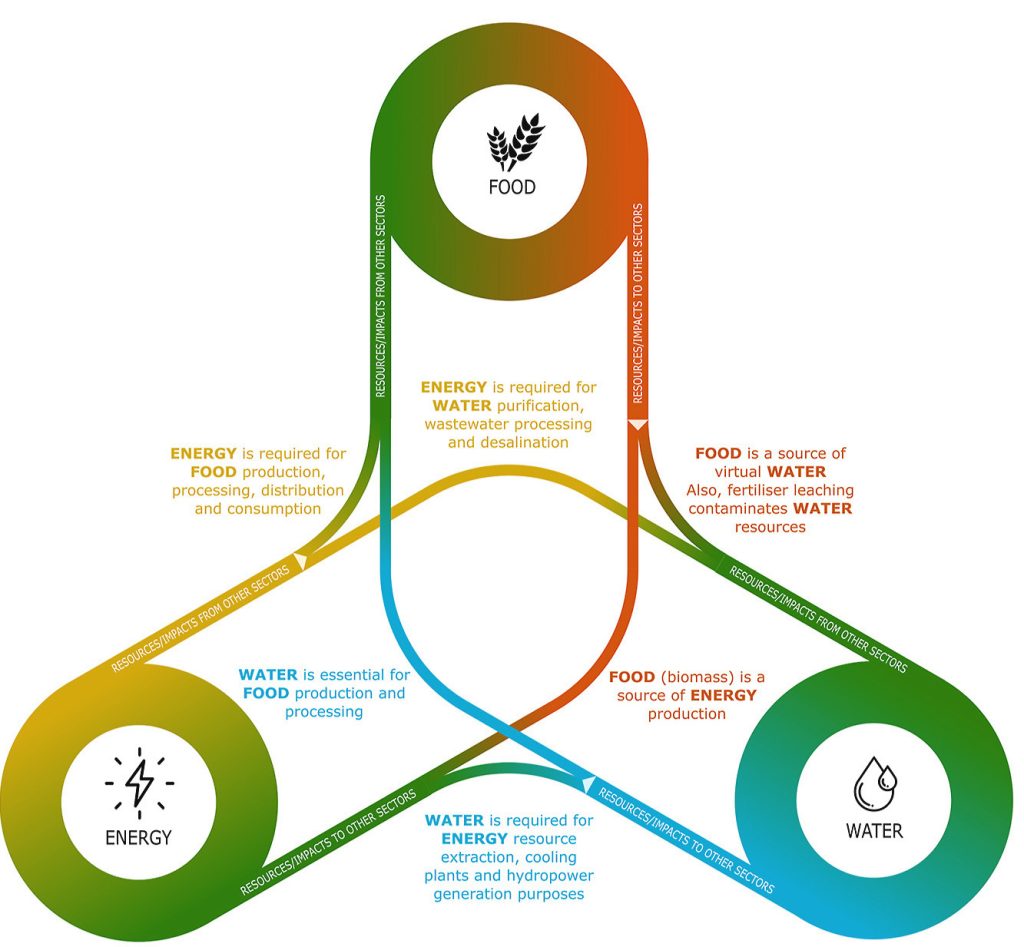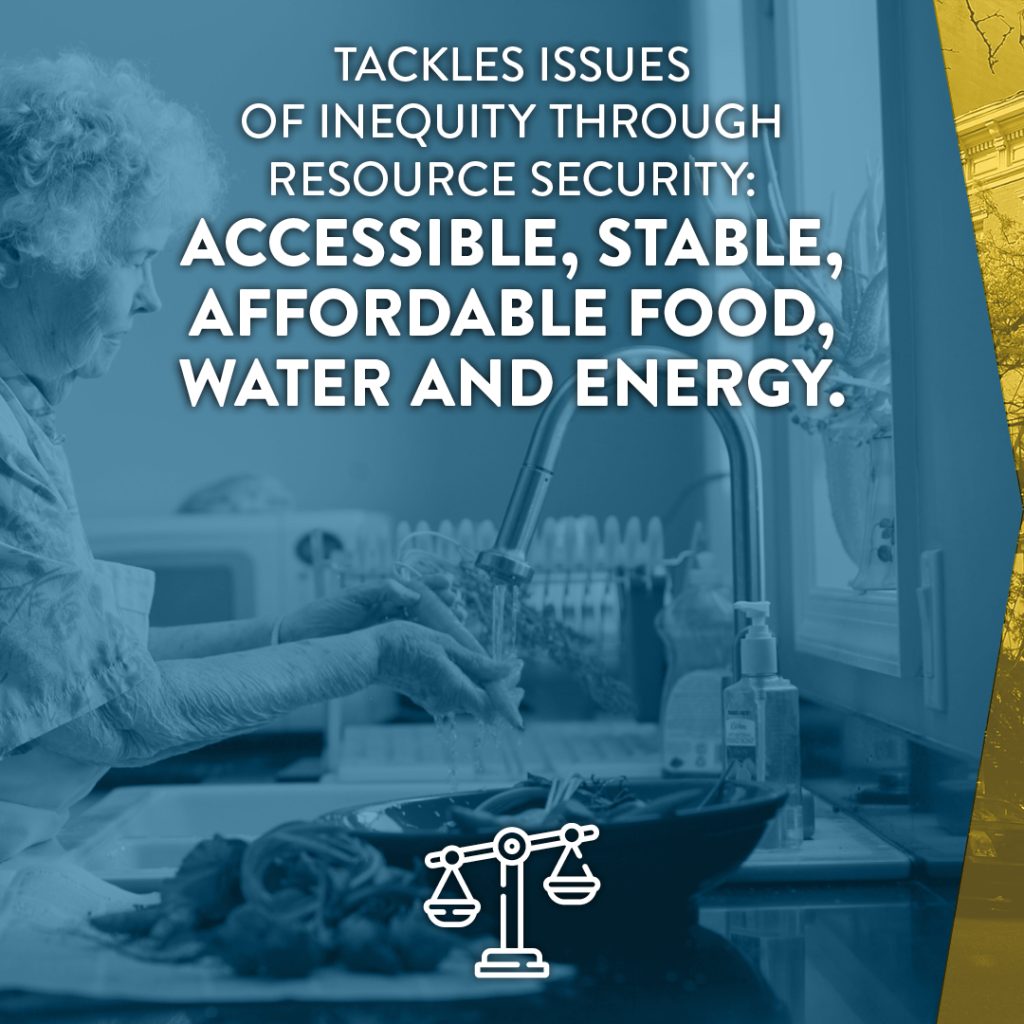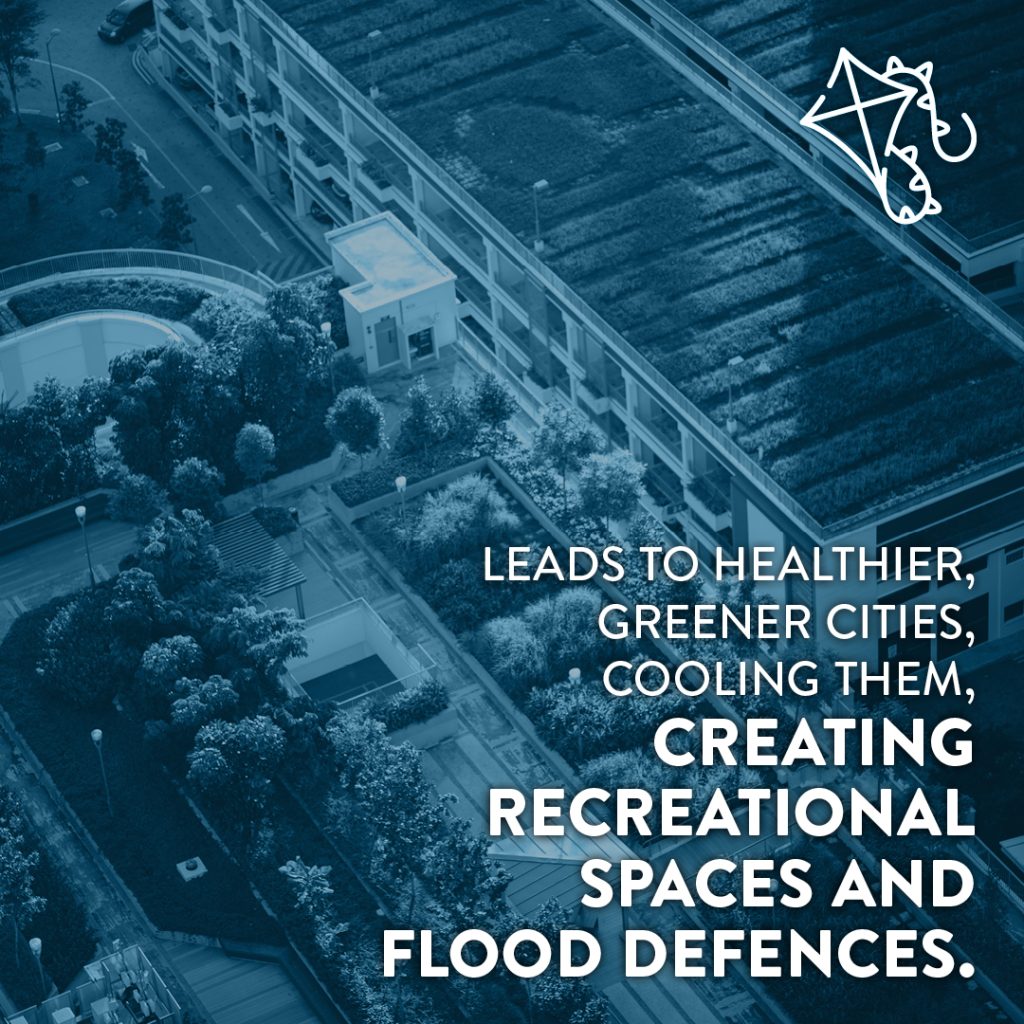Water, food, energy: in terms of creating sustainable cities, they are virtually impossible to separate. Optimising outputs for one relies on efficient resource management for all three, intrinsically locked as they are in the FWE nexus. So why don’t we design urban systems holistically to capitalise on this? If we intend to futureproof cities and sustain a decent quality of life – and environment – we need to start.
To quote the film Jurassic Park, “Life finds a way”. Nature functions on the principle of balance. Disrupt an ecosystem and it will work to restore equilibrium. Yet city living has forced us to create artificial systems from scratch. In terms of the food, water, and energy needed to fuel our lifestyles, we have approached them in isolation and created a rod for our own backs. To unravel this, we need to ask what exactly is the nexus, why is it important, and how can we make it work?
What Is the FWE Nexus?
By definition, a nexus is the point where components intersect.
In modern cities, well into the 21st-century, this wasn’t how we thought at all. Water and energy, for example, are still handled by individual utility companies. Food production and distribution are separated further.
This is how we plan systems: in silos, giving little consideration for how they interact. In talk of the nexus, we frequently hear about the inevitable trade-offs. Increasing efficiency in one strand, we assume, has knock-on implications for the other two, and we have to evaluate what we need to gain and what we can afford to lose.
This needn’t be the case. It’s a web. The arms of the FWE nexus are interdependent. What’s better for one can correlate with what is better for all three.
What’s the Big Deal?
There are considerable challenges and advantages to implementing a holistic approach to FWE. As the human population continues to increase, so does the demand for resources.
It is far from easy. According to Professor Alessandro Melis, co-lead for the CRUNCH project, the FWE nexus can be summed up in a word: “complex”.
Alessandro notes that we’ve painted ourselves into a corner. We’ve built cities around a network of inflexible, isolated systems, which we assume from millennia of city-living to be “the best model we have”. It isn’t.
We’re predominantly focused on securing the supply of resources to meet increasing demand but failing to approach the long-term issue holistically. The nexus is ever-changing, it is dynamic. Yet this has not been designed into city systems, so we’re cursed with an unsuitable blueprint. Policy and practices that skew this trend could create more resilient cities.
How Food, Water & Energy Interlink
It’s logical. As the United Nation’s Environmental Programme notes: “Water is key to produce electricity, for example through hydropower, or [is] even used for cooling in nuclear energy production.” In turn, energy is needed to run water treatment plants – sewage, desalination; it’s what transports food to where it’s needed, brings fresh water into our homes, and irrigates our crops. Food waste can be used as biofuel, giving us light and heat.
Bernd Klauer from the FUSE project cites Amman in Jordan as a clear example. With little precipitation, water is scarce. It’s sourced from underground or neighbouring countries. Approximately 40% of the city’s energy use is spent pumping H2O and around 70% of this water is needed for irrigation. By using “one of these resources,” Bernd adds, “you automatically use another”.

The possibilities seem almost endless. If harnessed, the density of cities lends itself to collaborative innovation. CITYFOOD shows us how aquaponics lends itself to “the dual use of water, which is used first to raise the fish and then to irrigate” vegetables. Similarly symbiotic, hydroponics in Brussels makes use of waste heat from the Abattoir district and supplies wastewater for growing micro-greens in neighbouring buildings.
Vulnerabilities
Senior Lecturer in Human Geography at Sheffield Hallum University, Anna Hawkins noted that cities are extremely resource hungry. Sating this demand has been constructed on vast supply chains stretching beyond the city boundaries and around the globe. This makes urban conglomerations highly vulnerable to disturbances in resource provision.
The nexus offers a chance to reduce a city’s reliance on external resources. This is important: supply chains are fragile. We need only think of the international disruption of the flow of goods caused by pandemics such as COVID-19, political shifts like Brexit, or accidents as seen with the blocking of the Suez canal. Human or natural disasters – war, drought – could equally have dire implications.
Decentralising sources provides security.
Using food as an entry point, Anna proclaims advocates producing locally more of what we need, as it leads to more efficient water use and reduces the energy that we expel on transporting it.
Is There an Environmental Aspect?
Yes. Food, water, and energy all have “strong impacts on climate, environment and land use”.
In 2050, the number of people living in cities is projected to be double that of 2020. Sprawling cities engulf natural land and habitats. Pressure mounts on agriculture as farmland is urbanised but a city’s demand for sustenance rises. Fertilisers increase yields but leaching pollutes waterways. We need better solutions.
“Large amounts of food consumption are required to support huge urban populations, but their production and distribution processes need to be rethought to reduce the environmental impacts.”
Keidai Kishimoto and Wanglin Yan
Urban farming holds out an olive branch. Spaces suitable for urban agriculture include rooftops, vacant houses, and abandoned, inadequately used or vacant lands. We can reclaim agricultural space from the city. Integrate it.
Writing about Creating Interfaces, Shafayet Choudhury informs us that ensuring “an urban area’s food, energy and water systems are integrated” means “climate goals become easier to achieve”. As Steffen Lehmann suggests, better nexus resource management will almost automatically “increase the efficiency of natural resource use” as well as “reduce CO2 emissions and waste generation”.
Social Channels
The FWE nexus impacts directly on security and quality of life. Evidence suggests that it:
Let’s Get Technical
Knowledge, technology, and infrastructure underpin success of the nexus. Alessandro points out that informed FWE management allows us to take “advantage of the associative opportunities”. Integration leads us to a sustainable closed-loop system.
“If you face two problems separately, you have two problems to solve. If you face two problems together, you might have two opportunities.”
Professor Alessandro Melis, CRUNCH co-lead
For example, wastewater can be collected and reused in “a hydropower system to store energy from photovoltaic” solar power units. We’re rid of waste and have an energy resource! For this to truly take hold, we need to “understand the intertwined nature of FWE in terms of lifecycles, including production, processing, delivery, consumption, and disposal”. We need data.
A handful of projects involved in the Sustainable Urbanisation Global Initiative Food-Water-Energy (SUGI-FWE) Nexus initiative developed citizen science tools. Interactive, simple-to-use interfaces where citizens can enter on-the-ground information.
Data-based FEW investigations are relatively new, but as collection and collation grow, the potential for a stronger nexus policy will emerge. One thing is already clear: a one-size-fits-all model is not the answer.
City density and large populations pose an advantage. It’s this that ensures urban areas are awash with information, that we can uncover “discoveries that cannot emerge when investigated separately”, and increase knowledge that offers opportunities to tailor relevant local solutions.
The FWE Nexus in a Nutshell
For too long, European cities, in particular, have approached food, water, and energy with silo thinking. We need to shift to a joined-up approach. By equipping ourselves with data, securing a local supply of resources, and establishing circularity to extinguish waste we can develop robust, resilient cities that more than meet growing demands without compromising equity or ecology.
Note: This article is commissioned by and produced in collaboration with JPI Urban Europe, a European research and innovation hub founded in 2010. JPI Urban Europe funds projects which address the global urban challenges of today. To make the food-water-energy nexus (FWE nexus) more tangible and the results of successful, funded projects in this context accessible to a wider audience, JPI Urban Europe collaborates with CityChangers.org. Details about JPI Urban Europe can be found on the respective websites linked throughout the article, which was originally published here.






